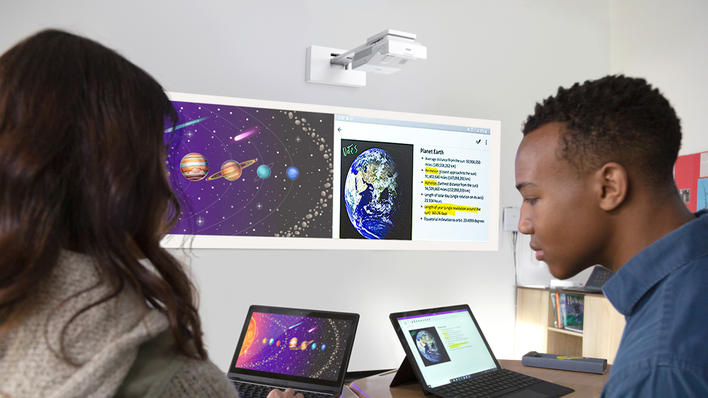If the very thought of higher education’s fall semester leaves you gasping into a paper bag, take a deep breath. While there may be more differences than similarities when comparing the first day of classes this fall over last, the education delivered will remain solid, future-focused and more dependent on technology than ever before.
As always, there is fear in the unknown. Traditional spaces, primarily for health considerations, promise slightly-to-significantly different experiences for the upcoming semester. Removing the mystery should soothe weary parent and student souls.
How will students learn?
Much will remain the same. Students will be taught, they will discuss, they will self-reflect, they will experience and consider new ideas. One difference in learning involves location tolerance. At least 30% of universities are planning for an online or online-option experience. While for some students that might feel different, Covid-19 has proven the importance of survivability within a remote environment.
On-campus students will be in typical classrooms or choosing to learn from campus housing. Students will need to be prepared to learn in a hybrid environment where students learn and teachers teach from disparate locations. This fluidity relies on the standard tech trifecta of strong wifi, seamless network connectivity and access to modern personal computing devices.
Information-technology teams need to be strengthening campus connectivity, while students need to be identifying what technology tools they need in their toolkit. Both are integral today in supporting student success.
What will classrooms look like?
Current statistics show that 80% of universities are looking to provide some form of on-campus classroom experience. While physically classrooms will look the same, many will now include a socially distanced layout boasting an increased use of technology to accommodate hybrid learning offerings.
Universities are creating new designations within current room-scheduling solutions (ex.: Ad Astra, EMS and 25Live) to automatically assign classrooms at a socially distanced capacity. Much like restaurants’ placing “Do not sit” signs on every other table, classrooms will stagger seating and feature floor stickers to ensure safe travel flow is maintained.
In addition to distancing, classroom technology may include increased video and audio devices to ensure an equitable experience for those learning or teaching from remote locations. Many classes, if not all, will be recorded and more interactive than ever. These classroom technologies don’t need to be fancy; they need to be consistent, simple to use and integrative with all other campus systems.
How will campus dining work?
If large dining halls are open, they will be socially distanced. Individual dining options, often located in the student union, need to be accessible, consistent and touchless. Mobile ordering is on the uptick for college campuses, large and small, to better accommodate contactless, grab-and-go food experiences. The mobile options tie directly into student accounts and dining plans, eliminating complexity and providing a seamless transaction. 73% of students place importance on mobile ordering, and 30% of students will choose off-campus options if mobility technologies are not in place.
Where will students eat? In dorms, in dining areas and on beautiful green spaces in the fresh air. Prepare for a bevy of socially distanced picnics. If green spaces are not wifi-enabled, technology teams need to place that on the roadmap.
Living and social aspects of college life
Each university offering an on-premise, residential experience will be unique in their planning. Nothing is off the table. Universities that are equipped to accommodate singles in doubles may start there. Standardizing card access and touchless door entry technologies follow. Rules and standards for health safety will be established and enforced. If not already, hand-washing, mask-wearing, social-distancing and temperature checks will become routine. These safeguards encourage healthy social interaction, not isolation, and many rely on apps for self-disclosure, measurement and reporting.
For the expected on-campus Covid-related illnesses, areas will be identified and procedures will be in place for the housing of and services to those quarantined on campus. As much of this requires contactless care, technology will serve as the foundation for most pre- and post-cautionary health standards.
Communication is critical
In a sea of unknowns, the need for consistent communication is critical for success. Students, parents, faculty, staff and the community need to be comprehensively knowledge-secure. One unsung hero of our current pandemic is the implemented suite of collaboration tools. Video town halls, instant chats, document sharing, interactive learning sessions, social groups and automated business processes all rely on a solid foundation of communication technologies. With silence and uncertainly comes fear. Connectedness and belonging solidify security.
In the coming months
If there were a university award for outstanding players of 2020, the Covid-19 pandemic would win the blue ribbon for the swiftest unearthing and identification of technology gaps on campuses. While the past few months have been spent filling in gaps, higher education technology is the midst of preparation for unprecedented delivery methodologies slated to commence within the next sixty days.
Technology remains a facilitator. Technology is not a replacement for or provider of teaching and learning. Technology connects, communicates and delivers. The substance remains within the education. Technology teams today are preparing to ensure that tomorrow’s leaders and innovators are able to receive the knowledge they need to sustain our world, almost as if our lives depend on it. Technology is honored to play that supporting role.
This article was written by Paige Francis from Forbes and was legally licensed through the NewsCred publisher network. Please direct all licensing questions to legal@newscred.com.
![]()



